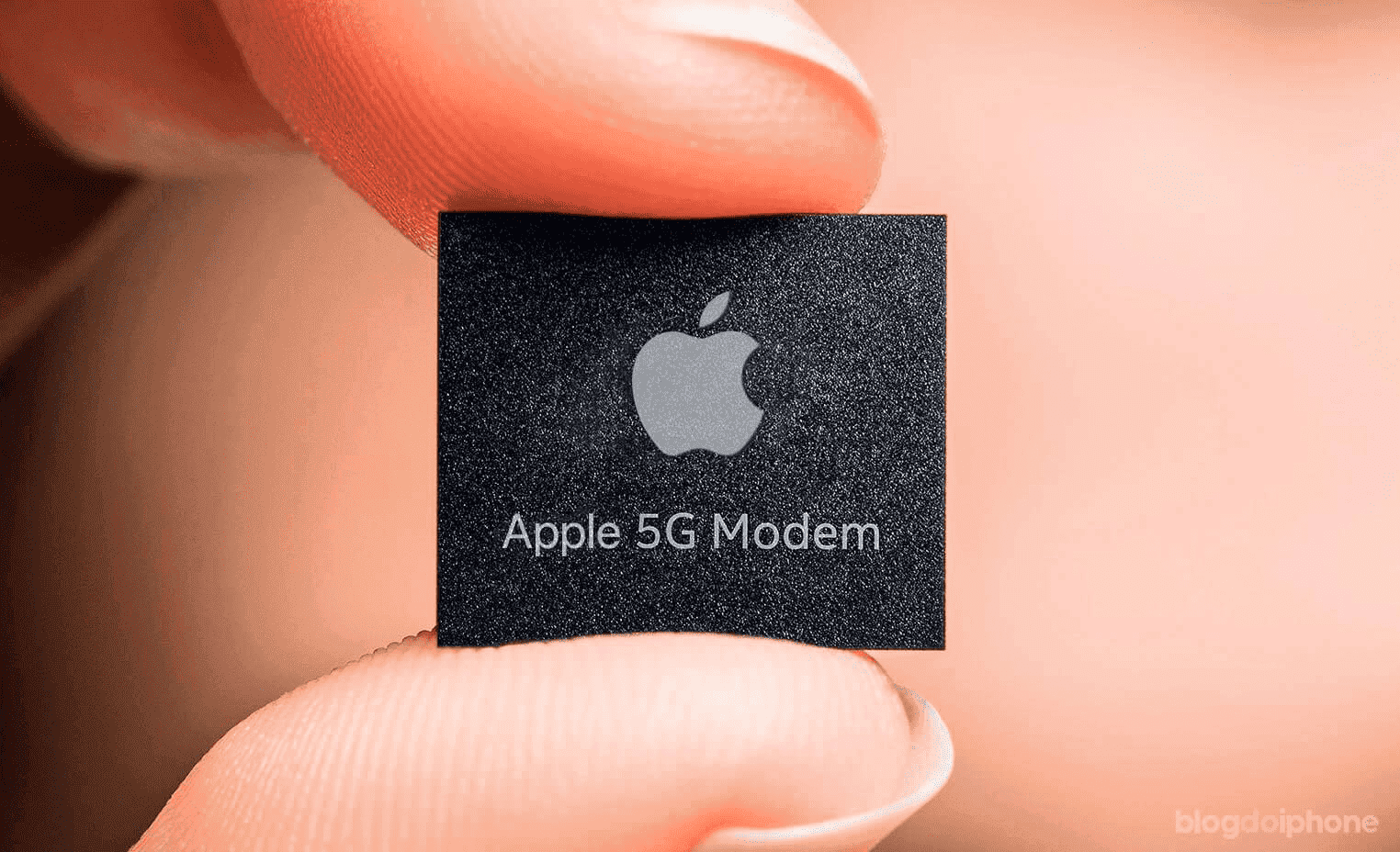Apple’s 5G modem prototype is “three years behind Qualcomm,” according to a recent report by The Wall Street Journal (WSJ). The report details Apple’s failure to develop its own modem, which was intended for use in its newer iPhones. According to The Verge, Apple has spent billions of dollars on the project, but the prototype is below par. Reuters confirms that Apple spent $1 billion to buy Intel’s (INTC. O) modem unit in 2019 to boost its 5G modem project.

Apple’s 5G Modem Project
Before we look at how Apple’s 5G modem is doing, let us briefly discuss how it all started. Apple’s decision to develop its own 5G modem was started by a desire to reduce its reliance on Qualcomm. The latter has been the primary supplier of modem chips for the iPhone.
Apple’s 5G modem project was led by Johny Srouji, the company’s senior vice president of hardware technologies. Srouji is known for his work on Apple’s A-series chips, which power the iPhone and iPad. Apple’s success in developing its own processors led the company to believe that it could also design a competitive modem chip.
The company also hired thousands of engineers to design its own in-house modems, MacRumors said. In addition to the engineers, it bought most of Intel’s mobile phone modem business in 2019. It also filled out the project’s ranks with Intel engineers and others hired from Qualcomm.

The goal is to launch a self-developed modem chip in the fall of this year. The modem chip project is codenamed “Sinope,” after the nymph who outsmarted Zeus in Greek mythology.
According to WSJ, “many wireless experts on the project quickly realized that achieving the goal was impossible,”. This statement was made by the Wall Street Journal in their assessment of Apple’s 5G modem project.
Former Apple engineers and executives familiar with the project told the Wall Street Journal that the obstacles to completing the chip were “largely of Apple’s own making”. They said that the team working on the project “suffered from technical challenges, poor communication and management dragged down by disagreements over the wisdom of trying to design chips rather than buy them.”
WSJ report said
Apple had planned to prepare its modem chips for use in new iPhone models. But tests late last year found the chip was too slow and prone to overheating. The circuit board is so big that it is half the size of an iPhone and cannot be used.
The team was dispersed among different groups in the U.S. and overseas, without a global leader. Some managers discourage engineers from delivering bad news about delays or setbacks, leading to unrealistic goals and missed deadlines.
“Just because Apple makes the best chips on the planet, it’s ridiculous to think that they can also make modems,” said former Apple wireless chief Jaydeep Ranade in 2018 ( ) left the company the year the project began.
Apple’s progress so far
Apple can design its own microprocessors for iPhones and iPads. This is good progress that the company has made. For this reason, it believed that it could make its own modem chips. However, such chips need to send and receive wireless data from various types of wireless networks. They must also adhere to strict connectivity standards to serve wireless carriers around the world. This makes the process more challenging than a regular mobile phone chip.
After testing of the prototype modems by Apple late last year, the results were less than ideal, The Verge claims. The WSJ said that the chips were “essentially three years behind Qualcomm’s best modem chips,”. They can make the iPhone’s wireless speeds slower than those of their rivals, the report claims.
As a result, Apple was forced to reach a settlement with Qualcomm. It has since used Qualcomm’s 5G modem chips in its latest iPhone and iPad series. As it stands, it could take until 2025 at the earliest for the technology to finally reach a level high enough for Apple to phase out Qualcomm, according to the report’s sources.
Serge Willenegger, a longtime Qualcomm executive, told the Wall Street Journal
“These delays indicate that Apple did not anticipate the complexity of this effort,”

Reasons for delays and issues faced by Apple
Despite Apple’s investment in the project, WSJ says the prototype chips tested last year were “essentially three years behind Qualcomm’s best modem chip”. The Verge reports that the slowness of the prototype is due to technical and managerial issues.
The Verge reports that one of the technical issues Apple faced was the design of the modem’s antenna. Antennas are critical parts of modem chips, as they transmit and receive signals. Apple’s in-house design was reportedly inferior to Qualcomm’s, which led to slower wireless speeds.
Apple also faced managerial issues that caused the project’s delays. According to The WSJ, Apple’s hardware engineering team was “inexperienced” in modem design. This led to a hitch in communication and caused delays. Also, the COVID-19 pandemic disrupted Apple’s supply chain and forced the company to delay testing and production.
Importance of Apple having an in-house modem
Apple’s decision to develop an in-house modem is important for several reasons:
1. Reducing reliance on Qualcomm: Apple has been using Qualcomm modem chips in its iPhones and iPads, but it wants to start replacing them with its own chips as soon as 2024. By developing its own modem, Apple can decrease its dependence on supply partners like Qualcomm.
2. Increased control over hardware and software: By building its own chips, Apple can better control the features it releases and manage the timeline for introducing new devices. This also allows Apple to own all of the hardware and software in its devices, which can lead to better integration and optimization.
3. Increased profit margins: Developing its own modem can also increase Apple’s profit margins by reducing the cost of components.
Conclusion
Apple’s failure to develop a competitive 5G modem is a setback for the company, but it is not the end of the road. Apple has reportedly resumed talks with Qualcomm about the possibility of using its modem chips in future iPhones. Additionally, Apple has acquired Intel’s modem business, which could provide the company with the expertise and resources it needs to develop its own modem chips.
In the short term, however, Apple’s reliance on Qualcomm for modem chips is likely to continue. This puts the company at a disadvantage in terms of cost and supply chain flexibility and limits its ability to innovate and differentiate its products. Apple will need to address these challenges if it wants to maintain its position as a leader in the smartphone industry.





